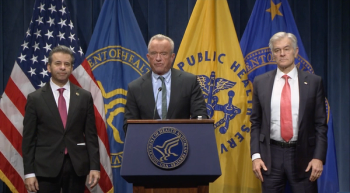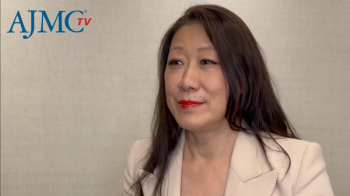
Patent Litigation Impacts on US Biosimilar Market Entry
Key Takeaways
- Patent litigation reform could accelerate US biosimilar market entry, which lags behind the EU due to protracted legal processes.
- Biosimilar manufacturers face options like pre-clearance, "at-risk" launches, and settlements, each with unique risks and benefits.
Earlier patent litigation can be reformed to reflect similar success across Europe, resulting in accelerated US biosimilar market entry.
This article originally appeared on the
Reforming patent litigation could significantly accelerate the entry of biosimilars into the US market, according to a study published in the
While the US has seen some growth in biosimilar approvals, the market lags behind the European Union, which approved 55 biosimilars between 2008 and 2021. A major obstacle to faster US market entry is the delay caused by protracted patent litigation.
Drug manufacturers often hold patents on various aspects of a drug beyond the active ingredient itself. These can include patents on the manufacturing process, formulation, how the drug is administered, and even the devices used for delivery.
Biosimilar manufacturers in the US face a complex legal landscape when entering the market. They typically have 3 primary options:
- Preclearance: This involves engaging in the "patent dance", a structured legal process outlined in the Biologic Price Competition and Innovation Act (BPCIA).2 The patent dance aims to streamline patent disputes between biosimilar manufacturers and brand drug companies, facilitating a quicker path to market for biosimilars while protecting the interests of the original innovators. It involves an information exchange to identify relevant patents for litigation.1
- "At-risk" launch: Manufacturers can launch the biosimilar while patent litigation is ongoing. However, this carries significant risk. If the biosimilar is found to infringe on a valid patent, the manufacturer could face substantial damages, potentially amounting to hundreds of millions of dollars.
- Settlement: Biosimilar manufacturers can choose to settle with the brand drug company to avoid patent litigation altogether.
Brand drug companies often seek preliminary injunctions to maintain market exclusivity for their brand biologics until patent litigation is resolved. This further complicates the entry process for biosimilars.
While facing potential legal challenges related to "ripeness," the Supreme Court ruling in Sandoz v Amgen provides a precedent for overcoming such hurdles.3 This landmark case established that biosimilar companies are not obligated to share their licensing applications with the innovator company prior to commercial marketing.
However, modifying clinical trial requirements to accommodate earlier litigation may pose practical challenges, such as the need for extensive data and potentially costly adjustments to trial protocols.1
To evaluate the potential benefits of this strategy, researchers analyzed biosimilar patent litigation data from 2010 to 2022 using the Lex Machina database to estimate potential cost savings associated with earlier market entry.
By enabling patent challenges to commence during phase 3 clinical trials, biosimilars could potentially enter the market more swiftly, coinciding with the expiration of primary patents, a model successfully adopted in the generic drug market.
Biosimilar development data analyzed from 2010 to 2022, found that 92% of the 54 biosimilars entering phase 3 clinical trials generated sufficient information to initiate meaningful patent litigation, minimizing the risk of wasting court resources. This analysis included 95 biosimilars associated with 25 brand biologics.
Of the 59 biosimilars analyzed, 61% were successfully launched in the US, 31% are currently involved in ongoing litigation, 2% failed clinical trials, and 7% had limited available data. Notably, 92% of these biosimilars submitted at least 1 dossier to the FDA, indicating that early patent litigation during phase 3 trials could be a viable strategy.
The outcomes of 32 biosimilars that reached the market included the 16% that successfully challenged brand drug patents in court, 9% that lost their lawsuits, and 75% that reached settlements. Litigation duration varied significantly, averaging 2.9 years for wins, 0.95 years for settlements, and 4.2 years for losses. The time between patent expiration and biosimilar launch also varied considerably, averaging 2.3 years for wins, 2.5 years for settlements, and a substantial 16.5 years for losses.
The BPCIA was designed to facilitate the entry of biosimilars into the market, but they have not achieved the same level of market penetration as generic drugs. This disparity is primarily attributed to the stringent clinical trial requirements imposed on biosimilars, significantly delaying their market entry compared with generic medications.
Unlike the US, many European countries, including the United Kingdom, allow both generic and biosimilar manufacturers to challenge patents at any stage of the product development process. This approach, which mirrors the practices of the UK's Medicines and Healthcare products Regulatory Agency, could potentially reduce the need for extensive and unnecessary clinical efficacy testing for biosimilars.
Experts like
“To fulfill the intended objectives of the BPCIA, Congress should create a two-track system that grants biosimilars the option for earlier litigation,” study authors concluded.1
References
1. Tu S, Goode R, Turner M, Van de Wiele V. Accelerating biosimilar market access: the case for allowing earlier standing. J Law Biosci. 2025;12(1):1-16. doi:10.1093/jlb/lsae030
2. Jeremias S. Breaking down biosimilar barriers: the patent system. Center for Biosimilars®. November 11, 2024. Accessed January 21, 2025.
3. Sarpatwari A, Gluck AR, Curfman GD. The Supreme Court ruling in Sandoz v Amgen: a victory for follow-on biologics. JAMA Intern Med. 2018;178(1):5-6. doi:10.1001/jamainternmed.2017.6145
4. Niazi SK. BioRationality: a critical analysis of Pfizer views on sustainability of biosimilars. Center for Biosimilars. December 23, 2024. Accessed January 21, 2025.
Newsletter
Stay ahead of policy, cost, and value—subscribe to AJMC for expert insights at the intersection of clinical care and health economics.















































